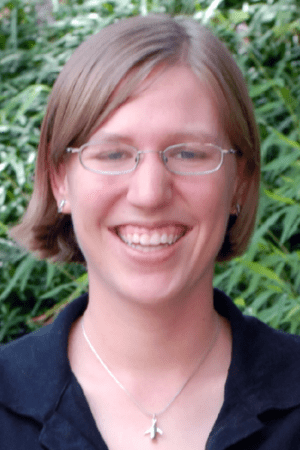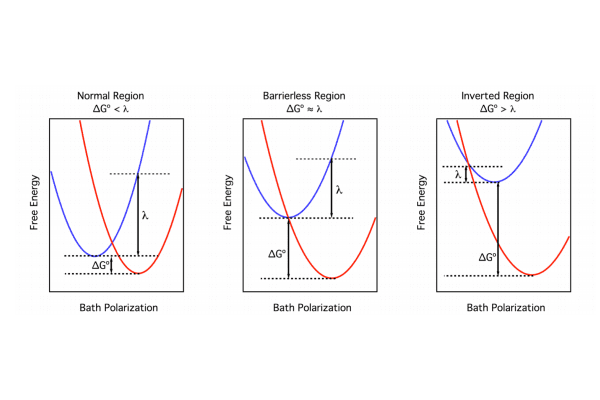Danielle Woodall

Danielle Woodall

Exploring exciton and trap state recombination dynamics in cadmium sulfide quantum dots
Abstract:
Colloidal semiconducting quantum dots (QDs) are ideal candidates for optoelectronic devices such as solar cells and LEDs because of their high photoluminescence (PL) quantum yields and photostability. In order to improve device efficiencies, we must understand how QD surfaces affect charge dynamics within the QD. In this work we demonstrate that CdS is an excellent model system for studying QD carrier dynamics for two principle reasons: (i) they produce both exciton and surface-localized trap state emission and (ii) their surface chemistry is simplified by the presence of only one ligand species.
First we, use temperature-dependent time-resolved photoluminescence (TRPL) to measure both exciton and trap recombination dynamics and find that an activated trapping process influences exciton dynamics while trap dynamics are dominated by non-radiative recombination. We propose a model to explain the exciton dynamics in which electron transfer from the exciton state to the deep emissive trap state occurs via a temperature-dependent multi-step process requiring multiple non-emissive trap state distributions. Second, we identify the nature of the trap state using excitation-dependent TRPL, and demonstrate for the first time that trap excited state lifetimes are up to four times longer when influenced by the exciton state compared to direct excitation. Finally, we attempt to control trap emission by altering the amount of native ligand, oleic acid on the QD surface. We present evidence that the ligand coverage on the QD surface and in solution affects not only trap emission but also exciton emission, and suggest that oleic acid plays a more complicated role in QD emission than previously expected. By developing CdS as a model system for trapping dynamics, we further our understanding of these dynamics and enable the development of new technologies that take advantage of the trap state benefits such as broad emission and long-lived charge separated states.
Sponsoring Chair: Dr. Marcus Jones
Committee: Dr. Michael Fiddy, Dr. Thomas Schmedake, Dr. Yong Zhang, Dr. Amy Ringwood